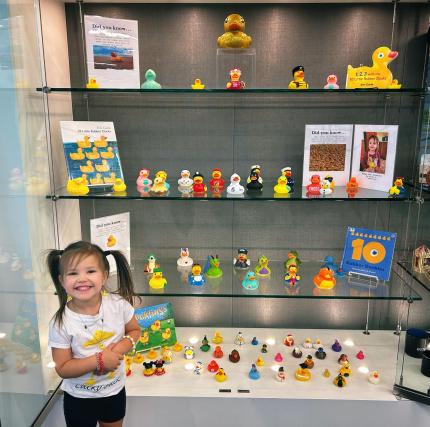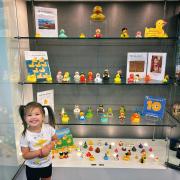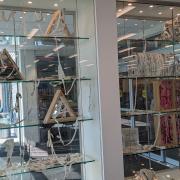Every branch in the Mid-Continent Public Library system with display cabinets asks the community to share their interests and collections with neighbors, allowing for civic engagement and community building. Our displays have included local artists, humanitarian organizations, children, teens, adults, local clubs, schools and many others.
Advanced Planning
The Community Displays have been happening for over a decade at our branches with most rotating about every 2 or 3 months. Each branch plans a bit differently, but most have one or two people who coordinate the displays.
Most branches have interest forms for community members to fill out, they are then contacted by the branch coordinator who makes sure displays are appropriate before adding them to our calendar. The coordinator will work with the community member to itemize what will be on display, the length of the display and when it will be installed and removed. An unexpected challenge has been when more than one customer has wanted us to display their own book or a singular work.
Marketing
Staff take a photo of the display with the community member at the time of installation and we share it on our social media.
Budgeting
There is no cost to this other than staff time for contacting and vetting possible displays and installation.
Day-of-event Activity
Our staff preps the cabinet by cleaning the glass shelves and the customer installs the collection and completes and signs the agreement (which spells out exactly what is on display and the length of the display).
There is generally 1 staff member present at the installation. It is up to the community member to complete the installation and later removal.
As many of the pieces are often delicate, we like to have the community member do the installation with our staff handling items as little as possible.
Program Execution
Our community displays have often had good responses. We use displays to start conversations with customers and we see customers having conversations with others in the community over the contents of the displays.
The displays allow customers to discover local artists, reminisce about times gone by, wonder at the creativity in the community and think about issues the community might be facing. Our community displays are generally all placed near the main entrances of our buildings. Everyone who comes in generally sees them, and most stop to look, even if for a few minutes.
I think we have achieved our goal. We see the engagement in people from around the community, city and region who are appreciating what others have shared. Our displays have brought people from around our library system (which is roughly the size of Rhode Island) to branches to view them.
We also have seen engagement with people around the country and world thanks to displays, like Olivia's Rubber Duckies. It is also not uncommon for us to see displays that were popular in one branch later exhibited in another. We do not have any quantitative data on the success of this program, we only have verbal feedback from individual library customers.
Advice
Have an easy, brief form customers can use to submit their proposal for a display.
Have a contract of expectations — what they will provide and what you will provide.
Be very clear that display contents cannot be removed or exchanged during the display period (this can cause confusion when the display is removed).
Understand that not everyone is going to fully appreciate every display, and you will most likely have discussions around intellectual freedom.
Ask yourself: who is the intended audience of your display?






